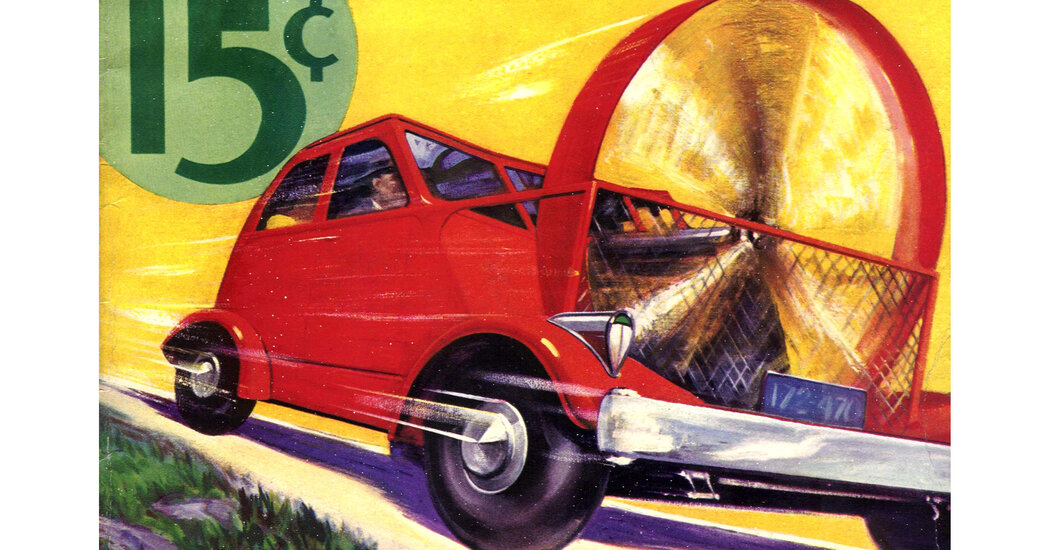
Popular Science Shuts Online Magazine in Another Sign of Decline
In yet another sign of its decline, Popular Science has stopped publishing its online magazine, three years after it shut its storied print edition, which began in 1872.
Popular Science will continue to publish articles and videos on its website, and will still produce its podcast, “The Weirdest Thing I Learned This Week.”
But its digital magazine, which was published quarterly since it began in 2021, has ceased publication and will no longer charge for subscriptions, according to Recurrent Ventures, the magazine’s parent company.
Its last online issue, titled “Fake,” was published in September and featured articles about taxidermy, artificial intelligence and fake crystals.
“Like most media companies, Recurrent is adapting to the evolving landscape of its audience,” Cathy Hebert, a company spokeswoman, said in a statement on Tuesday. “Whether it’s due to shifting patterns in social media, an increase in consumer demand for video or shifting advertising budgets — which have also increasingly moved toward video — it’s clear that change is a consistent theme.”
The decision came about two weeks after Axios, citing an unnamed source, reported that Recurrent Ventures had cut 13 positions at Popular Science. Only five editorial staff members remain at the publication, Axios reported.
Ms. Hebert declined to confirm how many workers had left but acknowledged “a reduction of head count within several brands and operational teams.”
Recurrent Ventures has been going through its own period of change, having recently announced its third chief executive in three years. The company was created in 2021 by North Equity, a private equity firm, to manage Popular Science, The Drive, Domino, Field & Stream and other media outlets that North Equity had acquired.
The closure of the digital magazine saddened and infuriated some former Popular Science staff members who noted that the publication’s rich tradition of science journalism began 151 years ago, and included articles by Charles Darwin, Louis Pasteur and Isaac Asimov.
Over the decades, Popular Science explored photography, hovercrafts, gyrocopters, spaceflight and the fight for more legroom on commercial airplanes, all with an eye to the general interest reader. Even in recent years, it won National Magazine Awards for “The Tiny Issue,” about all things small, in 2019, and “The Heat Issue,” about climate change, in 2022.
The magazine was also known for making fantastical predictions about the future and for offering quirky do-it-yourself projects like a motorized “yard tractor” that could be built from a kit and a homemade “plane detector” that could spot enemy aircraft, which was introduced after the bombing of Pearl Harbor.
“I’m frustrated, incensed, and appalled that the owners shut down a pioneering publication that’s adapted to 151 years worth of changes in the space of a five-minute Zoom call,” Purbita Saha, a former senior deputy editor, wrote on LinkedIn. She said she had been laid off on Nov. 13.
“I have some talented colleagues who are still producing news, reviews, and podcasts for popsci.com, but PopSci the magazine will cease to exist,” she wrote.
The cuts came after National Geographic, another venerable science magazine, shed writers and other staff members in a round of layoffs announced in April, months after it laid off several top editors last year. Other media outlets, including Buzzfeed, The Los Angeles Times, Vox Media and The Washington Post, have also made staff reductions.
Rick Edmonds, a media business analyst at the Poynter Institute, a school for journalists, said that the end of Popular Science’s online magazine was another step “along the way to try to find some format that is less expensive and that can hold some number of readers.”
He said it would be presumptuous to call it “the last step before the graveyard,” but added that it could be “tough to rebuild and build an ad base.”
Jacob Ward, a former editor in chief of Popular Science, said the demise of the online magazine “breaks my heart.” He noted that early print editions featured oil paintings on the covers, like one he keeps at home of a man in protective gear filming on the rim of a glowing volcano.
Popular Science was “very beautiful, very historical” and “a real treasure of American popular intellectual publishing,” he said in a video posted on LinkedIn. But he said that it was “just kind of disposable in the minds of people who make money for a living.”
Joe Brown, who was editor in chief from 2016 until 2020, said that doing away with the magazine would make it harder to unite stories around a common theme, and to provide the context that he said was missing in a lot of daily journalism. He said he was concerned that the remaining staff members would have to “feed the beast” to keep the website fresh.
Given the recent layoffs, “I don’t see how they can keep everything up,” he said.




